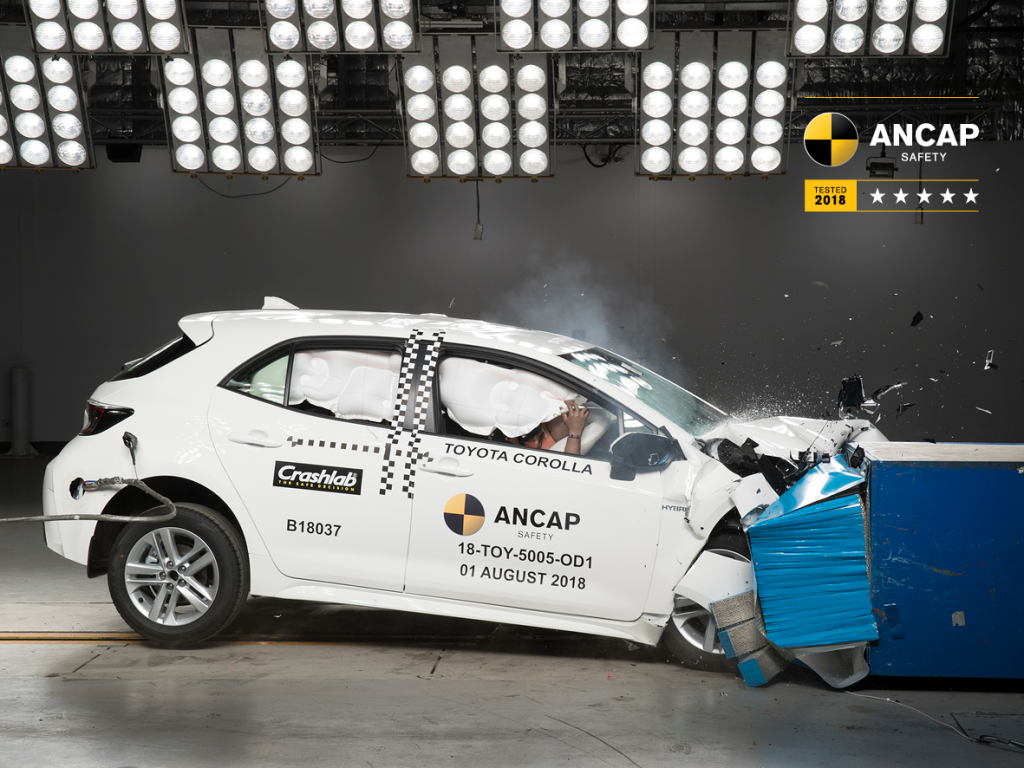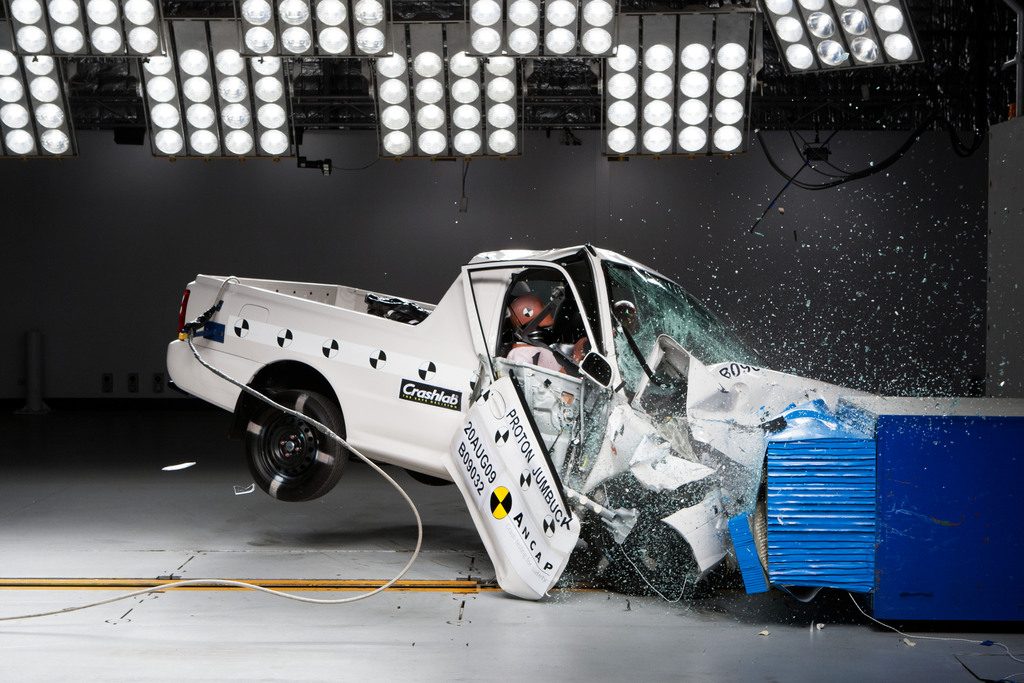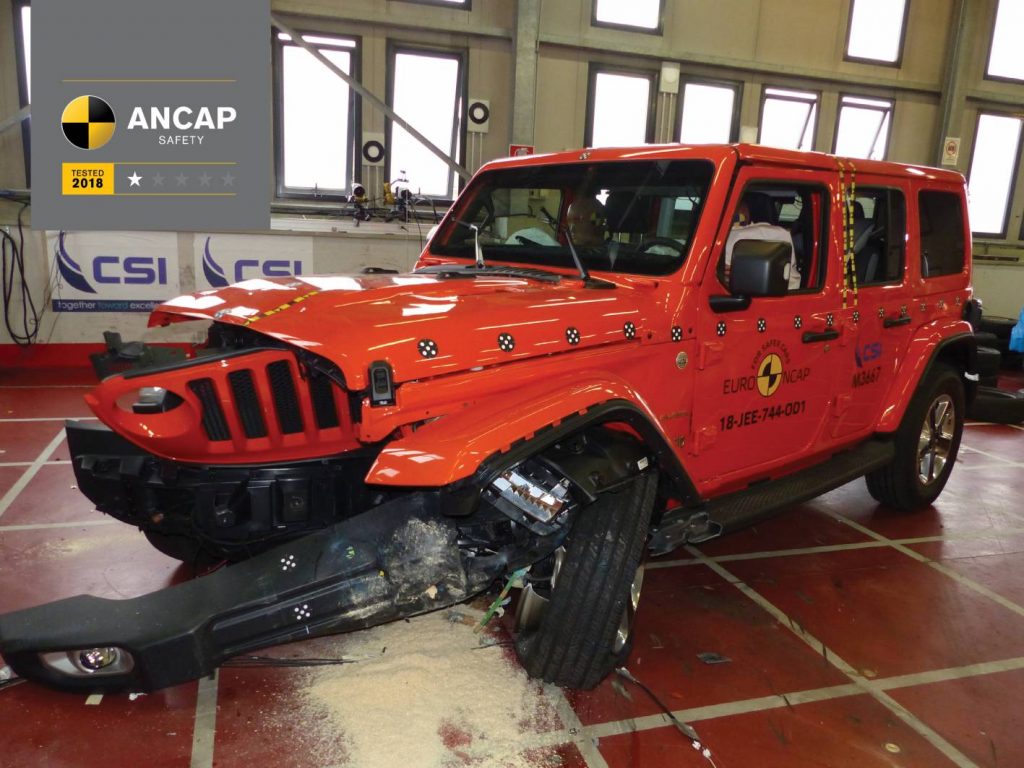ANCAP testing and ratings aren’t always clear. And some readers wonder why the current Mahindra XUV500 carries an ANCAP rating from 2012.
MANY OF OUR READERS are confused about ANCAP safety ratings. They ask us whether a five-star ANCAP safety rating means a safe car, how close testing methodology is to the real world and whether cars tested are the same as the ones they might actually buy.
Specifically, some readers have questioned why the face-lifted 2019 Mahindra XUV500 carries a four-star ANCAP safety rating achieved in tests carried out in 2012.
So let’s look at ANCAP crash testing and answer some of your questions.
A long-running safety initiative
The Australian crash testing program was set up in 1992 and the first results published in 1993. Cars are crashed in specially built facilities under conditions designed to simulate real world scenarios.
Vehicles are assessed on a number of different criteria, with points allocated for each. Testing also assesses a vehicle’s ability to avoid a crash altogether, taking into account the technology fitted.
Crash test dummies are used in testing to measure forces inflicted and the likely injuries that a driver, passenger or pedestrian may sustain.
Vehicles are then given a star rating out of five.
The European equivalent of ANCAP is Euro NCAP, established in 1997. ANCAP adopted Euro NCAP protocols in 1999, when they also introduced the star rating system.
ANCAP crash tests new passenger and light commercial vehicles and also incorporates crash data from related organisations to formulate its ratings.
However, all is not as simple as it seems.
The criteria change year upon year, so a car with a five-star ANCAP rating from a few years ago quite possibly would not score a similar rating today. For example, any vehicle that didn’t include electronic stability control (ESC) became ineligible to score five stars from 2008. So if you’re looking to buy a used car, you have to consider not only the star rating but also the date stamp – the more recent the better.
From January 2018, ANCAP evaluates vehicles against four key criteria:
· Adult occupant protection
· Child occupant protection
· Vulnerable road user protection
· Safety assist.
A range of tests and assessments are conducted in each area. Vehicles are required to meet minimum score thresholds for each star rating level. The overall star rating of a vehicle is limited by its lowest performing area of assessment.

Adult Occupant Protection
These tests consider the level of protection offered by the vehicle to adult occupants seated in the front and second row in the most common types of serious injury crashes.
Maximum score is 38 points, measured against full width (scored out of eight points), frontal offset (8 points), side impact (8 points), pole (8 points), frontal whiplash protection (1.5 points), rear whiplash protection (0.5 points) and city autonomous emergency braking (4 points).
Five stars requires 80 percent, four 70 percent, three 60 percent, two 50 percent and a 40 percent score gets a single star.
Child Occupant Protection
This evaluates the level of protection offered to child occupants seated in the appropriate child restraints in the rear seats. The vehicle’s capability to accommodate a range of child seats is also assessed.
The maximum score here is 40, consisting of dynamic frontal (16 points), dynamic from the side (8 points), child restraint installation (12 points) and on-board features (13 points).
Star allocation is as for Adult Occupant Protection.
Vulnerable Road User Protection
This part of the testing assesses the design of the front of the vehicle to evaluate how it minimises injury risk to pedestrians. Vehicles are also assessed for their ability to actively avoid or mitigate impacts with pedestrians and cyclists.
Scoring here total 48 points, made up of head impact (24 points), upper leg impact (6 points), lower leg impact (6 points), AEB VRU (vulnerable road users) for pedestrians (6 points) and AEB VRU for cyclists (6 points).
Minimum percentage for five stars in this category is 60 percent.
Safety Assist
This category evaluates the presence and effectiveness of active safety technologies which assist the driver in preventing or minimising the effects of a crash.
Prior to 2020, the maximum score in this category was 13, but from 2020 it will be 16.
Systems evaluated are speed assistance system (3 points), seat belt reminders (3 points), lane support system (4 points), AEB inter-urban (3 points in 2018/19, 4 points from 2020), AEB inter-urban (4 points from 2020) and junction assist (2 points from 2020).
To achieve five stars in the category requires a minimum of 70 percent.

Mahindra XUV500’s four-star ANCAP rating
When we quizzed Mahindra about its now very dated four-star ANCAP safety rating and whether there might be a more up-to-date test in the pipeline, we received a comprehensive and rational response.
The company spokesperson explained that India conducts its own safety testing and their ANCAP-equivalent is the Bharat New Vehicle Safety Assessment Program. Importantly, BNVSAP complies with the global NCAP standard. However, from what we could learn, Bharat NCAP is not part of the Global NCAP group.
BNVSAP testing was originally planned to begin in mid-2014 but didn’t get underway until 2017. The BNVSAP program subjects vehicles to an offset front crash, side impact and rear impact test. Front airbags, ABS and seat belt reminders are requirements to pass the test. Over time, more stringent rules will apply, including pedestrian protection, whiplash protection and child restraint systems.
One area of concern is that the BNVSAP proposed speed for the offset frontal crash test is 56km/h, considerably lower than the 64km/h applied by Global NCAP partners.
It was reassuring to hear that Mahindra is committed to developing more vehicles that will meet five-star standards.
However, due to local conditions, the first priority in the domestic Indian market is to meet the Government’s new emission requirement that requires all products sold after 1 April 2020 to meet Euro 6 standards. Vehicles that fail to meet this benchmark will not be allowed to be sold in the Indian market.
Mahindra’s spokesperson wasn’t able to give a definite date when its vehicles would start meeting five-star standards but assured us it would be “soon”.
The current XUV500 will not be ANCAP tested, so has to live with its 2012 four-star rating. Because Mahindra is working with Ford through its global alliance on the next model and platform, it will almost certainly achieve a five-star rating.

Do we need a separate safety testing program?
Now that cars are no longer being built in Australia, many people wonder if we need a local testing program.
Almost every car that’s imported has been crash tested somewhere else in the world, and often multiple times in multiple locations.
Local crash testing doesn’t come cheap, with the government providing a substantial contribution, as well as numerous others (including state auto clubs).
ANCAP is proud of its record.
In the early 1990s, car companies refused to reveal their in-house safety testing results. ANCAP set about disrupting that system by shining a light on safety, demanding higher standards of safety and, where necessary, embarrassing those car makers who were sub-standard.
But why test vehicles that have already been tested overseas?
The simple fact is that cars sold in Australia often differ substantial from outwardly similar models sold overseas. For example, Kia cars in Australia scored differently than their equivalent left-hand-drive models sold elsewhere. And the Ford Mustang, when it arrived in Australia, scored a disappointing two stars (models since 2017 are rated at three stars).
Why does ANCAP need date stamps?
There’s plenty of confusion about what a five-star ANCAP rating actually means, and the date stamp system means buyers of second-hand cars can know when their vehicles were tested and under what scoring regime.
A car that was rated at five stars in 2010 is unlikely to meet five-star requirements by current standards.
ANCAP doesn’t suggest that older cars are necessarily unsafe, but expectations change. Their reasoning is that older cars shouldn’t be compared to current models. Rather, they should be assessed against cars built at the same time.

Will ANCAP introduce a ten (or more)-star rating?
Despite most current cars scoring quite highly on the ANCAP scale, there are no plans to introduce a ten-star scoring system, or to introduce negative scores.
When ANCAP surveyed 1300 people, they said they were happy with a five-star rating.
Can ANCAP tell me the safest car?
ANCAP testing does not prove which is the safest car in all types and differing severities of crashes. Instead, they recommend looking for vehicles that have earned a five-star rating since these vehicles offer a high level of protection and are equipped with effective restraint systems and life-saving features and technologies.
Why doesn’t ANCAP test for rear-end collisions?
ANCAP’S reasons for excluding rear-end collisions from their testing is that severe rear-end collisions are relatively rare and usually involve being struck by a much larger vehicle. Frontal crashes and severe side impacts account for most car occupant fatalities.
How relevant is ANCAP crash testing in the real world?
Analysis by the Monash University Accident Research Centre shows that ANCAP crash test results correlate very well with the vehicle’s actual real-world performance. Cars that perform better in crash testing provide better occupant protection than those that perform poorly. A Swedish study found cars with three or four-star safety ratings are approximately 30 percent safer than cars rated two-star.
Are the cars tested by ANCAP the same as the ones I can buy?
Vehicles used in ANCAP tests are either bought directly from local dealerships or taken straight from the production line. If they weren’t subject to crash testing, they would have been sold to members of the public. While ANCAP does buy some vehicles to test, most are supplied by the manufacturer, and this is a source of some dissatisfaction. The cost of providing three vehicles to be tested to destruction is considerable. When Kia provided three Carnivals for crash testing and was disappointed with the result, the company addressed the problem and then provided a further three vehicles for re-testing – that’s a very large expense (although it does raise two points: ANCAP testing does identify safety issues that may not have been identified by car companies, or, worse, have been identified but ignored; and Kia deserves praise for going back, addressing the issues and submitting more vehicles for re-testing when they could have settled for the initial four-star safety rating).
How is ANCAP different from overseas test programs?
There are now nine New Car Assessment Programs around the world (Global NCAP partners are: ANCAP, Euro NCAP, IIHS and USNCAP in the US, JNCAP in Japan, Latin NCAP for Latin America and the Caribbean, C-NCAP in China, KNCAP in Korea and ASEAN NCAP covering South-East Asian nations). Each conducts its own slightly different range of crash tests and assessments. The most similar program to ours is Euro NCAP. A considerable number of European-manufactured models are tested in Europe and rated for the Australasian market. Eight of the nine programs use a one to five-star rating. The US Insurance Institute for Highway Safety (IIHS) rates vehicles using a scaled rating system – Good, Acceptable, Marginal and Poor.
If you’d like to know more about how ANCAP conducts crash testing, or to research ANCAP scores for particular makes and models, go to https://www.ancap.com.au/